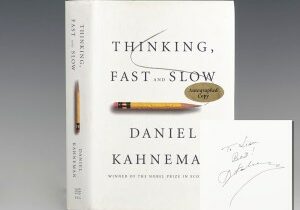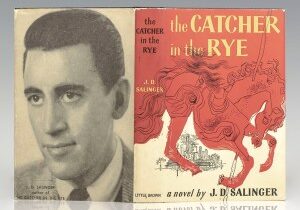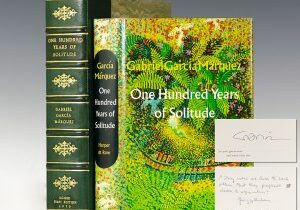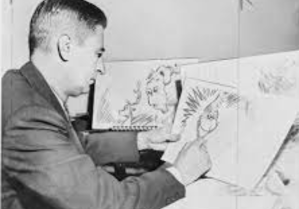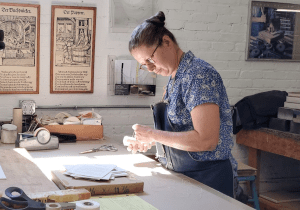Miss Jane Austen, born in late 1775, lived a life of relative obscurity. Now revered as an exceptional English novelist, Austen’s work provides a thorough social commentary on the British landed gentry at the end of the 18th century. Austen’s plots often explore the dependence of women on marriage in the pursuit of favorable social standing and economic security. Her works are part of the transition to 19th-century literary realism, and exhibit a biting irony which has earned her acclaim among critics and scholars, as well as near universal appeal amongst readers.
Shown above are first editions of all three volumes of Jane Austen’s Pride and Prejudice. Her second and most popular novel, this exceptional example of this landmark work in English literature, is exceedingly unique.
Pride and Prejudice was written between October 1796 and August 1797 when Jane Austen was not yet twenty-one. After an early rejection by the publisher Cadell, who had not even read it, Austen’s novel was finally bought by Egerton in 1812 for £110. It was published in late January 1813 in a small edition of approximately 1500 copies and sold for 18 shillings in boards. Volume I of the first edition was printed by Roworth and Volumes II and III by Sidney, and their imprints appear both on the versos of the half titles and at the end of the text of each volume In a letter to her sister Cassandra on 29 January 1813, Austen writes of receiving her copy of the newly publishing novel (her “own darling child”), and while acknowledging its few errors, she expresses her feelings toward its heroine as such: “I must confess that I think her as delightful a creature as ever appeared in print, & how I shall be able to tolerate those who do not like her at least, I do not know.” Inspiring the most book to screen adaptations of any of Austen’s works, Pride and Prejudice showcases a witty, comedic, and surprisingly modern take on love and life in rural England.

“Every Moment Has Its Pleasures And Its Hope”: First Edition Of Jane Austen’s Mansfield Park; Elaborately Bound In Full Morocco By Riviere & Son.
First edition of Austen’s classic third novel, Mansfield Park. This particular copy comes from the library of American industrialist and notable book collector William Hartman Woodin with his bookplate to volume I. A stunning example.
Although Mansfield Park was initially ignored by reviewers, it was a great success with the public. The first printing in 1814 sold out within six months. The novel tells the story of Fanny Price, starting when her overburdened family sends her at the age of ten to live in the household of her wealthy aunt and uncle and following her development into early adulthood. “The subject of Mansfield Park is education, or the discipline and training of the feelings… [It is] an intensely moving and intelligent comedy about modern England” (Honan, 338-48). Austen’s novels “were published anonymously, though the authorship was an open secret to her friends. It was first made public in a short biographical notice prefixed to the two posthumous novels in 1818. Miss Austen’s genius received little recognition during her life” (DNB).
Shown above are Northanger Abbey and Persuasion, the last of Jane Austen’s novels to be published. This particular copy is one of 1750 copies of the limited first edition. With the biographical note by Austen’s brother Henry, providing the first account of Jane Austen’s life and the first public acknowledgement of Jane Austen being the author of all her novels. From the library of American industrialist and notable book collector William Hartman Woodin with his bookplate to Vol. I. A stunning example of this exceptional rarity.
Although Northanger Abbey was the first of Jane Austen’s novels to be completed for publication in 1803, its was not published until after her death in 1817 together with her final novel Persuasion. “In a flash of mischief the author has put two rogues of like aptitudes together… In the 20th century [Persuasion] has been felt to be her most emotionally powerful work… Northanger Abbey does make serious points about social education and … became a running debate… over the real values of fiction” (Honan, Jane Austen, 385, 139). Henry Austen contributed a Biographical Note dated December 1817, which for the first time identified his sister as the author of the novels. Tomalin describes it as “a loving and polished eulogy”.
Sense and Sensibility was the first novel published during Austen’s lifetime. Shown above is a second edition copy of Austen’s first recognized work. A very attractive example of this desirable rarity.
Sense and Sensibility follows the story of the three Dashwood sisters as they must move with their widowed mother from the estate on which they grew up, Norland Park. The novel, which sold out its first print run of 750 copies in the middle of 1813, marked a success for its author. It had a second print run later that year. It was the first Austen title to be republished in England after her death, and the first illustrated Austen book produced in Britain, in Richard Bentley’s Standard Novels series of 1833. Austen paid to have the book published and paid the publisher a commission on sales. The cost of publication was more than a third of Austen’s annual household income but she made a profit of £140 on the first edition, which sold all 750 printed copies by July 1813. The novel has been in continuous publication since 1811, and has many times been illustrated, excerpted, abridged, and adapted for stage, film, and television.
In addition to this preview of our collection, browse our entire Jane Austen collection here.





